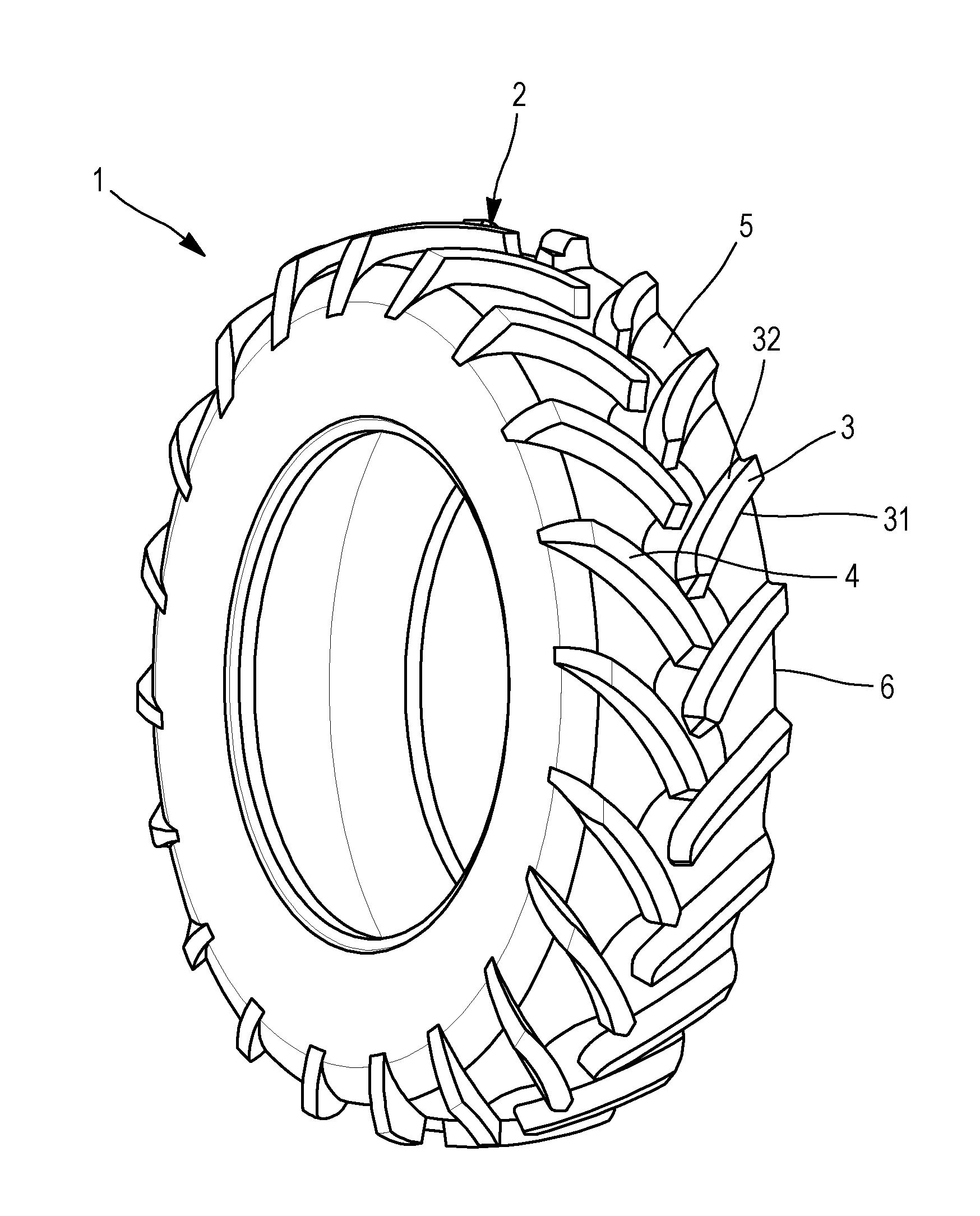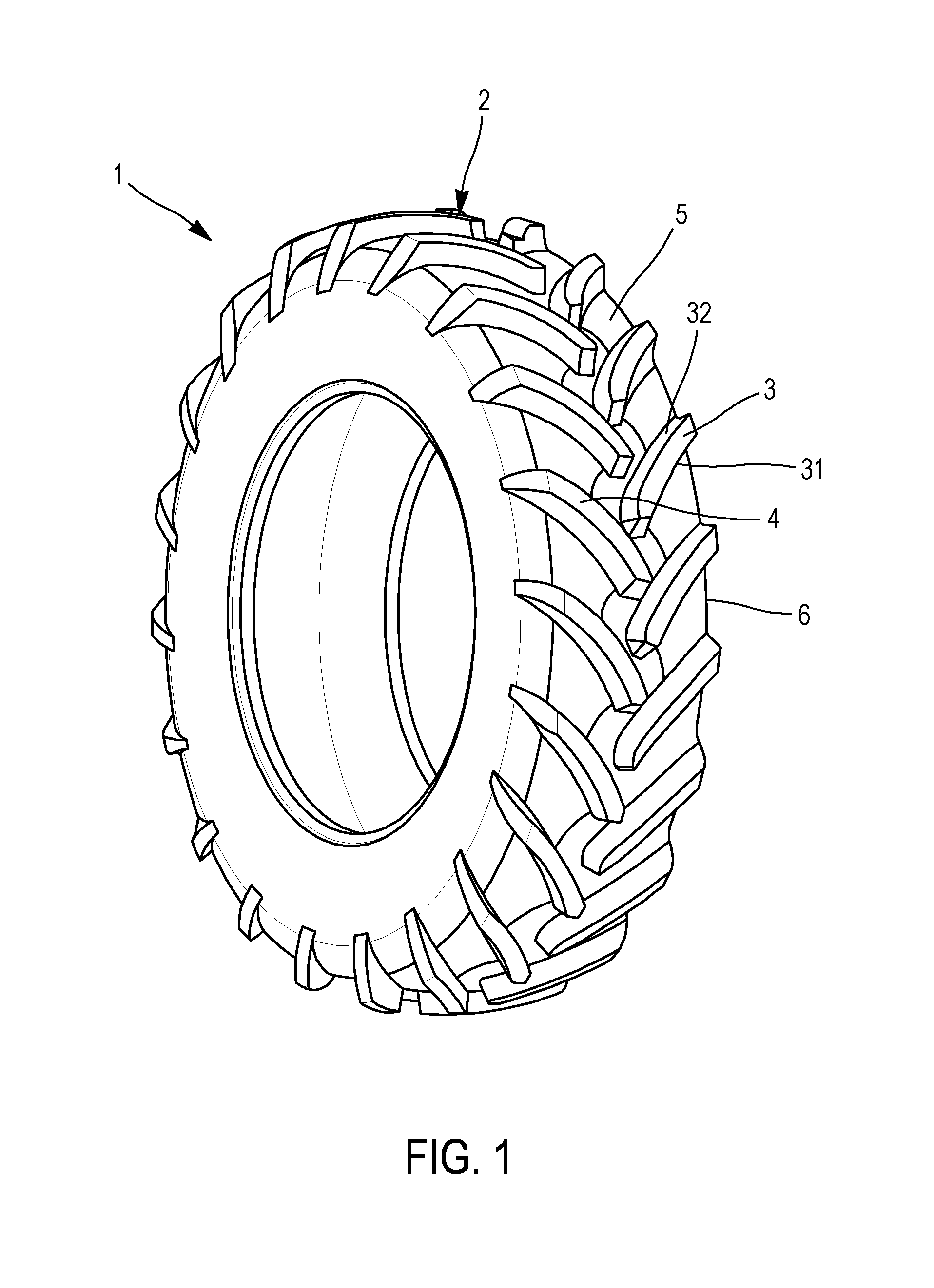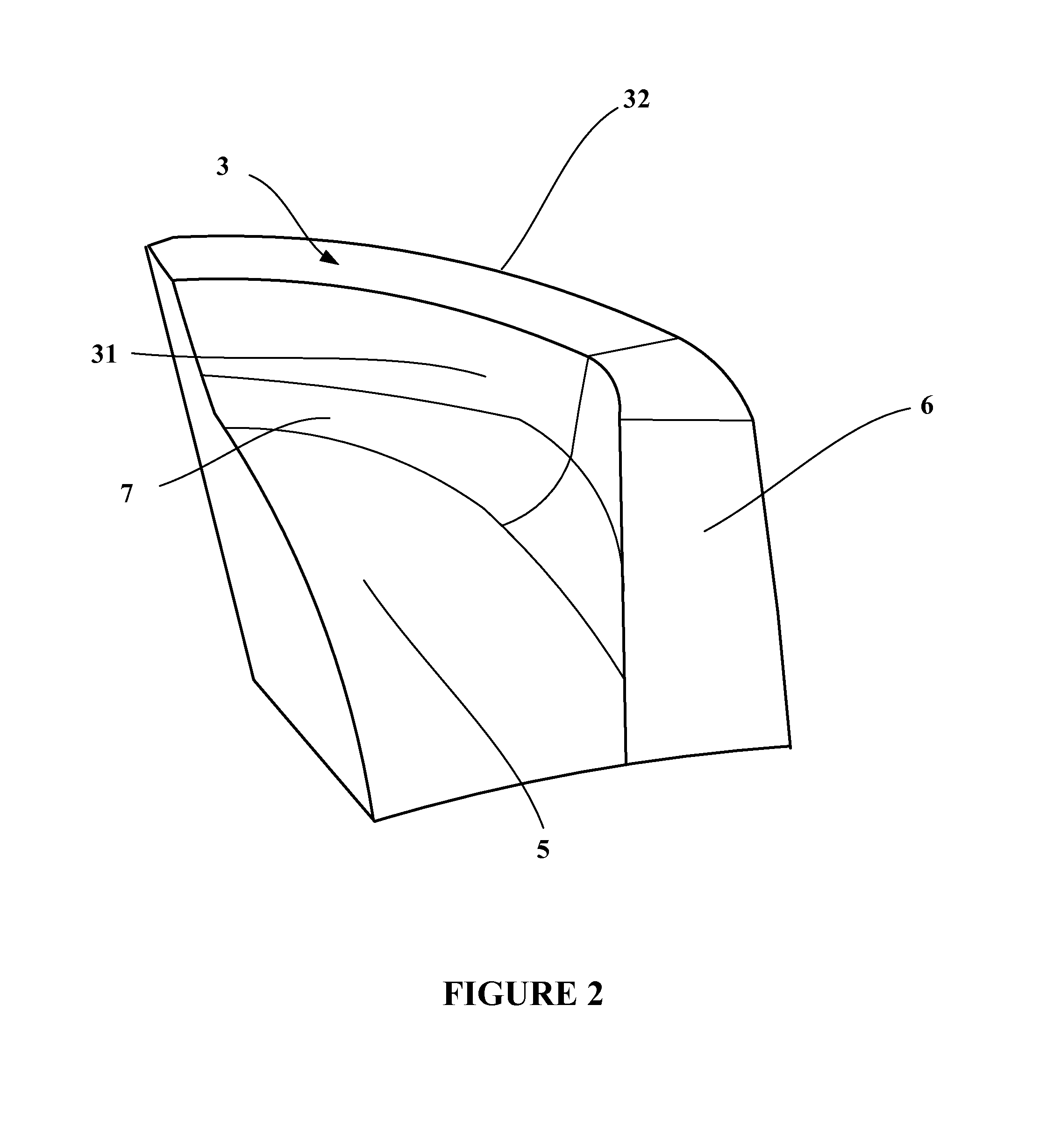Tire tread for a farm tractor
a tractor and tractor technology, applied in the field of tires for vehicles, can solve the problems of affecting affecting the performance of the bar, and the conventional bar tread may be sensitive to a particular form of attack, so as to reduce the amount of attack, improve the appearance of the bar, and improve the effect of soil removal
- Summary
- Abstract
- Description
- Claims
- Application Information
AI Technical Summary
Benefits of technology
Problems solved by technology
Method used
Image
Examples
Embodiment Construction
[0044]FIG. 1 shows a perspective view of a tire 1 according to the invention. The tread 2 of the tire comprises a plurality of bars (3, 4). In this particular instance, the plurality of bars is distributed in a first row of bars 3 and a second row of bars 4, these being symmetric with respect to the equatorial plane of the tire and arranged in a chevron pattern. A bar (3, 4) extends radially outwards from a base surface 5 of the tread 2, of revolution about the axis of rotation of the tire, over a bar height. The bar 3 extends axially towards the inside from an axial end 6 of the tread 2. The bar 3 extends circumferentially, in a preferred direction of rotation of the tire 1, from a leading face 31 to a trailing face 32. In the tire depicted in FIG. 1, the preferred direction of rotation is indicated by the points of the chevron patterns in which the bars are arranged.
[0045]FIG. 2 shows a perspective view of an axially outer end of a bar of a conventional reference tire. The bar 3 c...
PUM
 Login to View More
Login to View More Abstract
Description
Claims
Application Information
 Login to View More
Login to View More - R&D
- Intellectual Property
- Life Sciences
- Materials
- Tech Scout
- Unparalleled Data Quality
- Higher Quality Content
- 60% Fewer Hallucinations
Browse by: Latest US Patents, China's latest patents, Technical Efficacy Thesaurus, Application Domain, Technology Topic, Popular Technical Reports.
© 2025 PatSnap. All rights reserved.Legal|Privacy policy|Modern Slavery Act Transparency Statement|Sitemap|About US| Contact US: help@patsnap.com



